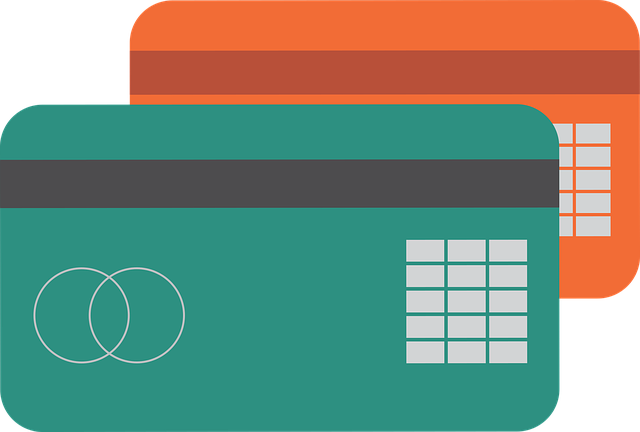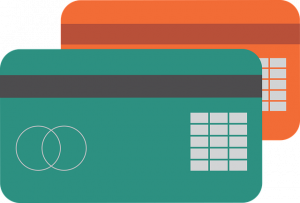
Working Capital Loans: Essential Funding for Daily Operations
 Business loans come in different types. There are general-purpose business loans that can be used to cover a variety of expenses, and there are specific-purpose business loans that are used to cover a type of expense. Working capital loans fall under the latter category. For a better understanding of working capital loans and how they work, keep reading.
Business loans come in different types. There are general-purpose business loans that can be used to cover a variety of expenses, and there are specific-purpose business loans that are used to cover a type of expense. Working capital loans fall under the latter category. For a better understanding of working capital loans and how they work, keep reading.
What Are Working Capital Loans?
Working capital loans are business loans that are used to cover every day business-related expenses. They aren’t used to purchase equipment or other long-term assets. Instead, working capital loans are used to cover operational expenses like rent, inventory and payroll. Work a working capital loan, new and early-stage businesses can stay afloat while they continue to grow and, hopefully, become profitable.
How Working Capital Loans Work
As a form of debt financing, working capital loans require repayment. You can apply for a working capital loan at banks and other lenders. Depending on the specific type of working capital loan for which you are applying, the lender may look at your credit to determine whether you are a good candidate.
Unsecured working capital loans typically require a high credit score. It shows that you are able to repay your debt, so lenders will be more likely to give you a working capital loan. Secured working capital loans are based on collateral. Therefore, most lenders pay little or no attention to credit scores for secured working capital loans. You can get a secured working capital loan regardless of your credit; you just need to provide collateral.
Reasons to Consider a Working Capital Loan
A working capital loan offers a convenient source of capital for new and early-stage businesses. It can take at least several years for startups to become profitable. During this time, they’ll burn through their available capital. Fortunately, there are financing solutions available, one of which is a working capital loan. A working capital loan will allow these new and early-stage businesses to keep their doors open during their early years.
Working capital loans are fast. The have a shorter approval process than many other types of loans. The end result is faster capital with which entrepreneurs can finance their operations.
Entrepreneurs don’t have to give up ownership of their businesses with working capital loans. Only equity financing involves the sale of ownership. Working capital loans are debt financing, so this isn’t an issue.
Have anything else to add? Let us know in the comments section below!

The Dos and Don’ts of Crafting a Business Plan
 Whether you own a small or large business, you should create a plan for it. A business plan is an invaluable document that can benefit your business in several ways. It will outline your business’s goals, and more importantly perhaps, it will reveal what steps you must take to achieve those goals. There’s a right way and a wrong way, however, to craft a business plan.
Whether you own a small or large business, you should create a plan for it. A business plan is an invaluable document that can benefit your business in several ways. It will outline your business’s goals, and more importantly perhaps, it will reveal what steps you must take to achieve those goals. There’s a right way and a wrong way, however, to craft a business plan.
Do Start With a Summary
Business plans should always start with a summary. This initial section should summarize the content of your business plan. It doesn’t have to be long. Rather, a single page should suffice for the summary. The summary will serve as an introduction to the rest of your business plan.
Don’t Set Unattainable Goals
Goals, of course, are an important part o a business plan. You’ll need to include both short-term and long-term goals in your business plan, and you’ll need to explain how you intend to achieve them. When creating goals, though, make sure they are attainable. Setting unattainable goals will only backfire.
Do Perform Market Research
You’ll need to perform market research when crafting a business plan. Most business plans include a strengths, weaknesses, opportunities and threats (SWOT) analysis. With a SWOT analysis, you’ll have to describe these aspects of your business, which requires market research.
Don’t Use Outdated Financial Information
All business plans have a section with financial information as well. After all, many business owners use their respective plans to secure funding from lenders or investors. They’ll present their business plans to lenders or investors in an effort to raise capital. When creating this section for your business plan, avoid using outdated financial information. The information included in this section needs to be accurate and up to date.
Do Proofread
When you are finished creating your business plan, you should proofread it. Errors are bound to happen. Allowing errors to go unfixed, though, creates an unprofessional image for your business’s brand. Fortunately, errors in business plans are easy to fix. And once fixed, you can rest assured knowing that they won’t bring down your business’s brand.
Don’t Set and Forget
A business plan isn’t something that you should set and forget. As your business changes, you’ll need to revise your business plan to reflect these changes. Failure to update your business plan will result in outdated or incorrect information.
Have anything else that you’d like to add? Let us know in the comments section below!

Choosing the Right Financing Option for Your Small Business
 You can’t expect your small business to stay afloat with financing. According to the U.S. Small Business Administration (SBA), nearly half of all small businesses fail within their first five years. Statistics such as this can be disheartening for aspiring business owners, but you can gain a competitive advantage with the right financing. Here are some of the different financing options from which you can choose when running a small business.
You can’t expect your small business to stay afloat with financing. According to the U.S. Small Business Administration (SBA), nearly half of all small businesses fail within their first five years. Statistics such as this can be disheartening for aspiring business owners, but you can gain a competitive advantage with the right financing. Here are some of the different financing options from which you can choose when running a small business.
Bank Loan
When most entrepreneurs think of financing for a small business, they envision bank loans. Bank loans are a form of debt financing that, as the name suggests, are offered by banks. Some of them are secured, whereas others are unsecured. Secured bank loans are backed by collateral. Unsecured bank loans are not backed by collateral. Regardless, if you’re looking for a quick and easy financing option for your small business, you may want to choose a bank loan.
SBA Loans
There are SBA loans available for small businesses. SBA loans are offered by banks as well, but they are backed by the SBA. What does this mean exactly? If you default on an SBA loan, the government will reimburse the bank that provided you with the loan. More importantly perhaps, SBA loans are available in longer terms and more flexible interest rates than traditional bank loans.
Line of Credit
Another financing option to consider for your small business is a line of credit. It’s similar to a bank loan. Both bank loans and lines of credit are forms of debt financing, and they are both offered by banks. The difference is that a line of credit is revolving, whereas a bank loan is not. Lines of credit are revolving in the sense that you can continue to draw money from them as long as you stay within the limit. With a bank loan, on the other hand, you’ll receive a fixed lump sum of money, which you’ll have to repay according to the bank’s terms and conditions.
Invoice Financing
While not as common as loans and lines of credit, some entrepreneurs use invoice financing for their small businesses. Also known as factoring, it involves selling accounts receivables invoices to a third party at a discount. The third party will purchase the invoices at a lower cost than their face value. If an invoice is worth $100, for instance, it may purchase the invoice for $80 to $90. Invoice factoring is a viable financing option for small businesses that send their customers or clients invoices.
Have anything else that you’d like to add? Let us know in the comments section below!

Understanding Business Financing Options: A Comprehensive Guide
 You can’t start a new business without securing financing. All businesses require financing. Consisting of money and/or credit, it will allow you to hire employees, purchase inventory and cover all essential operating expenses. Understanding the available financing options will allow you to choose the right financing vehicle for your business.
You can’t start a new business without securing financing. All businesses require financing. Consisting of money and/or credit, it will allow you to hire employees, purchase inventory and cover all essential operating expenses. Understanding the available financing options will allow you to choose the right financing vehicle for your business.
SBA Loans
Small Business Administration (SBA) loans are a popular form of business financing. They are backed by the U.S. SBA. If a borrower defaults on an SBA loan, the SBA will reimburse the lender up to 75% of the remaining balance. SBA loans are only available to businesses with fewer than 500 employees, and businesses must not exceed $7.5 billion in average annual revenue.
Common types of SBA loans include:
- SBA 7(A)
- SBA Express
- SBA 504
- SBA Microloans
- SBA Disaster
- SBA Community Advantage
Traditional Bank Loans
In addition to SBA loans, there are traditional bank loans. Both SBA loans and traditional bank loans are offered by banks. The difference is that SBA loans are backed by the US, whereas traditional bank loans are not.
Because they are backed by the SBA, SBA loans often have a lower interest rate than traditional bank loans. On the other hand, traditional bank loans have faster approval times. If you’re looking for a fast financing option, you may want to choose a traditional bank loan.
Venture Capital
Most forms of financing fall under one of two categories: debt or equity. Debt financing consists of loans, meaning you’ll have to borrow money from a lender. Equity capital consists of investments in which an investor or investment firm purchases a slice of your business. The investor or investment firm will then become a partial owner of your business.
Venture capital is classified as equity financing. You don’t need to go public with your business to secure venture capital financing. Even if your business is privately traded, you can sell an ownership stake in it to an investment firm. Investment firms that specialize in new businesses are known as venture capitalists.
Crowdfunding
There’s also crowdfunding. Of all the financing options listed here, it’s the newest. Crowdfunding didn’t gain momentum among entrepreneurs until recent years. What is crowdfunding exactly?
Crowdfunding is a financing option that involves small, micro-sized investments from a large pool of individual investors. Private investors pool their money together — typically through a crowdfunding website or platform — to invest in new businesses.
Have anything else that you’d like to add? Let us know in the comments section below!

Key Performance Indicators (KPIs) for Small Business: What to Track and Why
 What key performance indicators (KPIs) do you use to track for your small business? KPIs offer insight into your small business’s performance. They are metrics that, in some way, reveal how well or poorly your small business is performing. By tracking the right KPIs, you can optimize your small business’s operations for greater success.
What key performance indicators (KPIs) do you use to track for your small business? KPIs offer insight into your small business’s performance. They are metrics that, in some way, reveal how well or poorly your small business is performing. By tracking the right KPIs, you can optimize your small business’s operations for greater success.
Customer Acquisition Cost
Customer acquisition cost is a KPI for the average cost of acquiring new customers. The lower your small business’s customer acquisition cost, the better. If you spend $10,000 on marketing and advertising and attract 1,000 new customers, your small business’s customer acquisition cost would be $10.
Revenue Growth Rate
Revenue growth rate is a KPI for the rate at which your small business’s revenue increases. It’s commonly used in accounting. Expressed as a percentage, revenue growth rate reveals the month-over-month increase in your small business’s revenue.
Customer Lifetime Value
Not to be confused with customer acquisition cost, customer lifetime value is a KPI for the average revenue generated by a typical customer during his or her relationship with your small business. Some customers will make more purchases than others. If your small business has strong customer loyalty — and its customers make multiple purchases — you can expect a high customer lifetime value.
Gross Profit Margin
One of the most important KPIs for small businesses is gross profit margin. It represents the percentage of revenue generated by your small businesses minus your small business’s cost of goods sold (COGS) during that same period. A high gross profit margin is a sign of a strong business model.
Inventory Turnover Rate
Inventory turnover rate is a KPI for how quickly your small business sells its inventory and replaces it with new stock. You should aim for a fast inventory turnover rate. A fast or low inventory turnover rate means your small business is able to quickly sell its inventory and replace it with new stock, thus beginning the sales cycle again.
Net Promoter Score
You may want to track Net Promoter Score as a KPI as well. It’s a score-based system that measures customer satisfaction. You can send your small business’s customers a simple post-purchase survey asking them to rate their experience on a scale from one to 10. Using these answers, you can then calculate a Net Promoter Score for your small business.
Have anything else that you’d like to add? Let us know in the comments section below!

6 Tips for Small Business Budgeting

Budgeting is an important part of running a small business. A well-planned budget can help you allocate your small business’s resources more effectively. You can use it to reduce expenses, make informed business decisions and better prepare your small business for future success. Here are six tips on how to create an effective budget for your small business.
#1) Use Accounting Software
Accounting software will streamline the process of creating, as well as managing, a budget. QuickBooks, for instance, offers all of the necessary budgeting tools. You can use the popular accounting software to get started with a budget — all without outsourcing this task to a third-party accountant.
#2) Track Expenses
You can’t expect to create a budget without tracking your small business’s expenses. Expenses consist of goods and services that you purchase to use in your small business’s operations. They can include rent, utilities, inventory, payroll and any other costs. Tracking your small business’s expenses will allow you to create a detailed and accurate budget.
#3) Categorize Expenses
In addition to tracking your small business’s expenses, you should categorize them. Don’t just list all of your small business’s expenses in your preferred accounting software. Instead, place the expenses in one or more relevant categories. Categorizing your small business’s expenses will provide you with a clearer picture of where your small business’s money is going so that you can identify areas where you can cut costs.
#4) Keep an Eye on Cash Flow
Cash flow is critical to the success of all small businesses. It represents the money entering and leaving a given business. Keep a close eye on your small business’s cash flow to ensure that you have enough money to cover all expenses and make necessary investments in your small business’s future.
#5) Look for Cost-Savings Opportunities
Another budgeting tip is to look for cost-savings opportunities. There are always ways to cut operational costs. Maybe you can negotiate better deals with suppliers, or perhaps you can switch utility providers or scale back on certain marketing tactics. By looking for cost-savings opportunities such as these, you can improve your small business’s budget.
#6) Adjust Regularly
Finally, review your small business’s budget on a regular basis. No budget lasts forever. As your small business grows and changes, you’ll need to adjust your budget to accommodate these changes.
Have anything else that you’d like to add? Let us know in the comments section below!

5 Small Business Survival Tips When Interest Rates Are High
 Interest rates can have a direct impact on your small business’s performance and level of success. When interest rates are low, money is cheap and easy to borrow. High interest rates, in comparison, result in a higher borrowing cost. Here are five tips to help your small business survive during an era of high interest rates.
Interest rates can have a direct impact on your small business’s performance and level of success. When interest rates are low, money is cheap and easy to borrow. High interest rates, in comparison, result in a higher borrowing cost. Here are five tips to help your small business survive during an era of high interest rates.
#1) Explore New Revenue Streams
Relying heavily on a single revenue stream can expose your business to significant risks during times of high interest rates. Consider diversifying your revenue streams to reduce your business’s reliance on any single particular market or customer segment. Explore new markets, products or services that can generate additional revenue and help offset increased the otherwise expensive borrowing costs associated with high interest rates.
#2) Prioritize High-Interest Debt Payment
Prioritizing loans and other forms of debt with a high interest rate can help your small business survive. Focus on paying down this debt before other, less-costly forms of debt. By making regular payments to high-interest debt, you can pay them off early. The sooner you pay them off, the less money you’ll have to pay in interest to the lender.
#3) Engage in Cost Control
Another tip to help your small business survive when interest rates are high is to engage in cost control. Review your business’s expenses and look for areas where you can cut costs without compromising the quality of your business’s products or services. Look for opportunities to streamline operations, negotiate more attractive terms with vendors and suppliers, and optimize your business’s pricing strategies to maintain profitability.
#4) Review Capital Expenditures
You should consider reviewing your business’s capital expenditures during times of high interest rates. Some purchases are essential to your business’s operations, meaning your business can’t survive without them. Other purchases, though, may or may not be essential. Delaying or prioritizing capital expenditures based on their potential impact on cash flow can help your business conserve cash and manage borrowing costs.
#5) Improve Customer Retention
What’s your business’s customer retention rate? Retaining existing customers is often more cost-effective than acquiring new ones. During times of high interest rates, focus on delivering value to your business’s existing customers and strengthening customer relationships. Provide excellent customer service, tailor your offerings to meet their needs and explore opportunities for upselling or cross-selling to maximize customer retention and loyalty.
Have anything else to add? Let us know in the comments section below!

A Crash Course on Chargebacks: What You Should Know
 You can’t ignore chargebacks when running a business. Assuming your business accepts payments in the form of credit and debit card transactions, you may experience chargebacks. Some reports suggest that a half-dozen out of every 1,000 card transactions involve a chargeback. What are chargebacks exactly, and how do you prevent them?
You can’t ignore chargebacks when running a business. Assuming your business accepts payments in the form of credit and debit card transactions, you may experience chargebacks. Some reports suggest that a half-dozen out of every 1,000 card transactions involve a chargeback. What are chargebacks exactly, and how do you prevent them?
What Are Chargebacks?
Chargebacks occur when a consumer disputes a transaction made with a business. The consumer reaches out to his or her bank or card provider and, thus, initiates a request to reverse the charge. Chargebacks can occur for various reasons, such as fraudulent transactions, dissatisfaction with a product or service or billing errors.
Chargebacks can prove costly for businesses, as they often result in lost revenue, fees and additional administrative work. Your business will lose revenue from chargebacks. With each chargeback, money will be transferred from your business to the consumer. You may incur chargeback fees and other related expenses associated with them as well. To prevent chargebacks with your business, consider the following measures:
How to Prevent Chargebacks
Creating a clear and transparent billing policy can protect your business from, chargebacks. Consumers should know exactly how they will be billed when purchasing your business’s products or services. Otherwise, they may not recognize the transaction on their bank or card statement. This can lead consumers to initiate a chargeback — something that can be prevented with a clear and transparent billing policy.
Offering excellent customer service can help address complaints or concerns promptly and effectively, which may prevent chargebacks. When consumers have a positive experience with your business, they’ll be less likely to initiate a chargeback. Responding to customer inquiries, providing refunds or exchanges and resolving disputes in a timely and satisfactory manner can help prevent chargebacks as well.
Don’t forget to implement fraud detection tools. While chargebacks often have different causes, the most common cause of chargebacks is fraud. Fraudulent chargebacks typically result in a chargeback. The victim of the fraudulent transaction will initiate a chargeback with his or her bank or card provider Implementing fraud detection tools like address verification systems (AVSs), card verification value (CVV) checks and risk scoring models can help identify potentially fraudulent transactions and prevent chargebacks resulting from fraudulent activities.
In Conclusion
By following these tips, you can reduce the risk of chargebacks and protect your business’s revenue, reputation and customer relationships.
Have anything else that you’d like to add? Let us know in the comments section below!

C-Corps vs S-Corps: What’s the Difference?
 When starting a new business, you might be wondering whether to use a C-corp or S-corp classification. The Internal Revenue Service (IRS) recognizes several different tax classifications for businesses, some of which include sole proprietorships, limited liability companies (LLCs), C-corps and S-corps. While C-corps and S-corps are both “corporations,” however, they aren’t the same. What’s the difference between C-corps and S-corps exactly?
When starting a new business, you might be wondering whether to use a C-corp or S-corp classification. The Internal Revenue Service (IRS) recognizes several different tax classifications for businesses, some of which include sole proprietorships, limited liability companies (LLCs), C-corps and S-corps. While C-corps and S-corps are both “corporations,” however, they aren’t the same. What’s the difference between C-corps and S-corps exactly?
Ownership Limitation
S-corps are more common with small businesses. This is because they are limited to no more than 100 shareholders. Both S-corps and C-corps distribute shares to their respective owners, but S-corps can only have up to 100 owners. C-corps, on the other hand, can have an unlimited number of shareholders.
Types of Shareholders
There are nuances regarding the types of shareholders supported by S-corps and C-corps. S-corp can only have certain types of shareholders, such as individuals, trusts, exempt organizations and estates. C-corps, in comparison, can have all types of shareholders.
Pass-Through Taxation
Another difference between C-corps and Corps is pass-through taxation. S-corps are classified as pass-through entities, meaning that all of their profits and losses are passed through to their owners. The owners must then pay the taxes on the S-corp’s profits. C-corps are not pass-through entities. Instead, they are classified as separate entities. C-corps must pay taxes on their profits, and their shareholders must pay taxes on any dividends they receive from the C-corp.
Governance
It’s also worth mentioning that governance is easier with S-corps than with C-corps. They have less-stringent requirements for record-keeping, and their decision-making formalities are more relaxed. C-corps, in comparison, have more stringent requirements for decision-making, and they have stricter rules for decision-making.
In Conclusion
Many entrepreneurs assume that S-corps and C-corps are the same. After all, they are both “corporations,” and both of these tax classifications can protect owners’ personal assets from business-related liabilities. As revealed here, though, there are several key differences between S-corps and C-corps. Which tax classification should you choose?
S-corps are generally preferred by small businesses that want to avoid double taxation and take advantage of the simpler governance structure, while C-corps are preferred by larger businesses with multiple owners and more complex operations. Keep in mind that the type of corporation to form depends on the specific circumstances of each business and its owners. For some businesses, an S-corp is the right choice. For others, a C-corp is the right choice.
Have anything else that you’d like to add? Let us know in the comments section below!

5 Big Benefits of Email Marketing for Your Small Business
 What channels does your small business use to promote its products or service and interact with its audience? Even if your small business operates locally, you should consider using email. Email marketing offers several benefits that can help your small business succeed.
What channels does your small business use to promote its products or service and interact with its audience? Even if your small business operates locally, you should consider using email. Email marketing offers several benefits that can help your small business succeed.
#1) Customer Service
You can use email marketing to improve your small business’s customer service. It offers a direct line of communication between your small businesses and its customers. Maybe a customer wants to know if your small business has a product in stock, or perhaps a customer wants to when your small business will be open. Regardless, you can use email marketing to communicate with customers while achieving a higher level of customer service.
#2) High ROI
Email consistently tops the charts as offering one of the highest return on investments (ROIs) of all marketing channels. One study found that the average ROI of email marketing is 3,600%. If you spend $1 on email marketing, for instance, it may generate $36 in revenue for your small business. You won’t find that kind of ROI with other marketing channels.
#3) Long-Lasting
Email marketing is long-lasting. Once you’ve convinced a customer or prospective customer to sign up for your small business’s newsletter, you can send him or her emails. Newsletter signups imply permission. Customers and prospective customers will give you permission to send them emails upon signing up. And you can continue to send them emails for as long they stay subscribed.
#4) Personalization
Another benefit of email marketing is personalization. Rather than sending the same generic emails to all customers and prospective customers who sign up for your small business’s newsletter, you can send them personalized emails. Personalized emails are customized with information that’s unique and specific to each recipient. You can mention their names in the emails, or you can mention the products or services they’ve purchased. Regardless, email marketing makes it easy to create personalized correspondences such as this.
#5) Measurable
It’s worth mentioning that email marketing is measurable. As a form of digital marketing, you can track the results of your small business’s email marketing campaign. You can see how many recipients opened your small business’s emails, how many clicked the buttons or links in those emails, and you can see how many recipients converted by making a purchase. Email marketing is completely measurable, which makes it easy to optimize and improve.
What are your thoughts on email marketing? Let us know in the comments section below!
